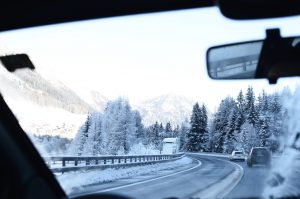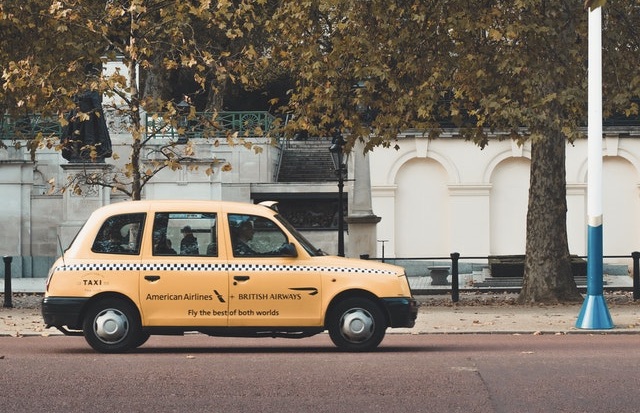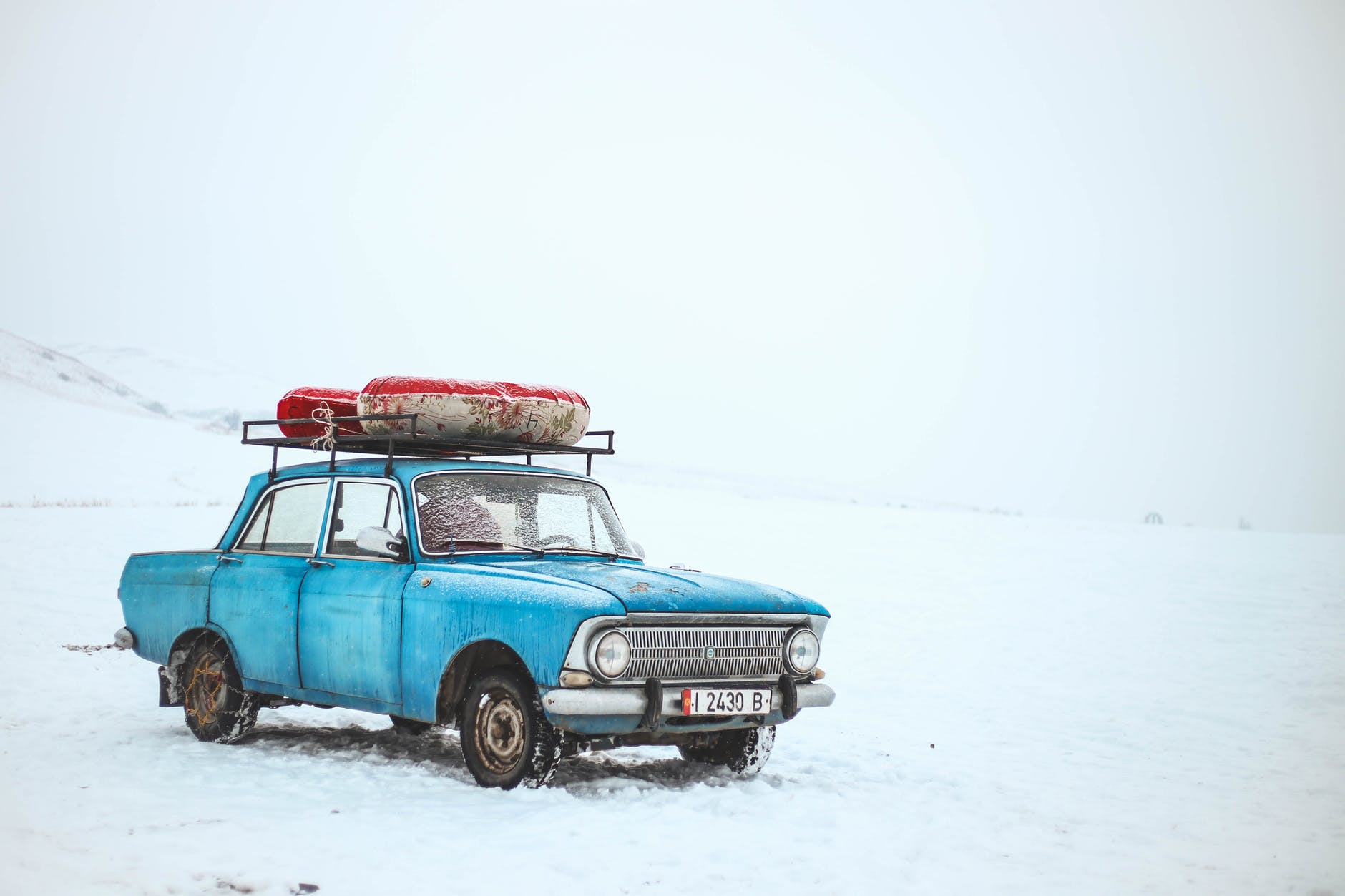Winter driving is a challenge that all drivers have to face during their driving process. Although each driver has to pass a driving license test before being permitted to drive, there are several tips for driving in winter that you should keep in mind for avoiding unfortunate accidents. Let’s get started!
If you wish to obtain a driving license, taking our Theory Test Practice is an effective way to get your license quickly and easily. Let’s get started now!

Why is driving in winter bad?
Driving in winter is a real challenge for drivers, especially new ones because there is often a higher risk of accidents than in the summer. Here are some common winter driving troubles:
- Foggy weather reduces the visibility of drivers when traveling on the road.
- The foggy driving glass on cold and wet winter days poses a high safety risk to the cars in front.
- Cars can be slippery on the road on rainy days. Or encounter engine stall when going through flooded roads.
- The car engine is more difficult to start in cold weather. Especially with long-used cars, the car engine is weak or other parts have problems.
- The car suddenly stalled on the road because the battery ran out. This is very common in winter because car batteries have to consume more energy for car lights, heating, air conditioning, etc.
How do I prepare myself for winter driving?
Car tires
In winter, the climate is lower, at this time the road surface will be more slippery than usual. The tires are worn, you need to be more careful because the friction between the wheel and the road surface will be lower, unfortunately encountering obstacles that make you have to brake quickly will cause you to lose control, which will lead to dangers. danger to both the driver and the life of your vehicle. So in case, your tires are too old, you need to replace them immediately to ensure safety while driving in winter.
Engine
It is not recommended to start the engine continues to warm up the car in winter. Before starting the car, go around to check if the exhaust is not blocked. It should be noted that the vehicle should not be started in an enclosed area as it can produce a lot of toxic carbon monoxide.
If you want to make the car warmer, you can clean the car. This action will clean standing water, and snow-covered car doors. You should also clean the tires to make sure they are not covered with snow or ice. In addition, the roof of the car also needs to be cleaned, otherwise, snow or water can spill onto the windshield when you brake, which will obstruct visibility and cause danger.
Low temperature also makes the engine difficult to start. Many cars today have a block heater. When the car is parked overnight or for a long time, plugging the engine heater into the home electrical network about 4 hours before using the car helps the car start easier and warms up the car faster. It is estimated that it costs about 50 USD per month for the block heater if plugged in every day.
In some urgent measures, car owners can use dilute synthetic oil in winter to avoid thickening of the lubricating head or use some antifreeze additives. In addition, it is best to use a backup battery to detonate.
Read more: Distinguish the 5 different types of pedestrian crossing in UK
Air conditioning system
Coolants contain a lubricant that keeps the rubber liners and piping in good working order. Therefore, not using the car air conditioner for a long time means that the coolant will not move around and the lubricants will not work on the rubber parts. As a result, the rubber liners leak causing the coolant to run out, leading to more frequent changes in air pressure or. In a bad case, the systems will no longer be able to hold gas and the rubber linings must be replaced.
In winter, turning on the appropriate air conditioning mode both ensures the health of the user and helps save fuel when operating. The recommended temperature in the car is between 25-26 degrees Celsius. Habits such as opening the windows can increase wind resistance, causing fuel consumption.
Antifreeze
Some coolants with high freezing temperatures are prone to freezing when the weather is too cold. To overcome this situation, users should add an antifreeze solution to the cooling water.
Ford experts note that antifreeze users need to be mixed in the correct ratio to avoid damage to the radiator and pump. Each type of vehicle will have a corresponding antifreeze solution, car owners can refer to the manual to choose the right solution.
Battery
Vehicle batteries are at higher risk of failure when frequently exposed to wet or cold weather conditions. A damaged battery has many potential dangers such as being unable to start the vehicle or having electrical systems malfunction due to an unstable power supply.
Users can identify a damaged battery through signs such as the car is more difficult to start than usual, the battery indicator light on the speedometer panel glows. As recommended by many car manufacturers, the battery should be replaced after 3 years of use.
Suitable engine oil
When the temperature is too low, the engine oil will become denser, making it difficult to start the car, because the parts that need to be lubricated have not received the necessary amount of oil. To make the car easier to start in the cold season, users need to choose a low-concentration engine oil.
Car glass
Car glass is a part that drivers need to pay special attention to in winter. Due to cold and wet winter weather or when it rains, water particles can condense on both the rearview mirror and the windshield of the vehicle. Blurred car glass can greatly limit visibility while driving.
To fix the situation of blurred driving glass, you should prepare a cleaning cloth and car glass cleaning solution. Besides, it is recommended to use the vehicle’s glass heating mode (if available) with the button on the control panel. In addition, a winter driving experience is to turn on the air conditioner inside the car. The ideal temperature range is between 25 and 26 degrees Celsius.
A winter driving tip to help deal with foggy car windows when it rains is to turn on the car’s wipers. You should check the wipers carefully before moving to make sure the wipers are working at their best. The advice for you is to replace the wipers every 6 months.
If you care about Road Signs In The UK, you can try to visit our blog.
How can I drive better in winter?
Use lights sensibly
Lights are a must-have condition, working well if you want to run on foggy roads, because not only help increase visibility for the driver but also let other cars see your car. So, before setting off, do a quick check that all the lights are working.
Do not use headlights (high beams) to navigate in fog. Headlights will cause the fog to form a wall of light directly in front, severely reducing visibility. It is recommended to use low beams (low beams) to navigate in fog. Turn on more fog lights and if the fog is dense or uses emergency lights (flashing 2 signal lights continuously) to warn vehicles behind.
Activate the car windshield drying function
Foggy weather is often accompanied by low outside temperatures, which directly affect the surface of the windshield. The inside of the windshield will quickly fade as water vapor begins to condense. Therefore, when detecting signs that the car’s glass is blurred due to condensation, the driver should activate the glass drying function through the button usually integrated on the center console to not restrict visibility.
Pay attention when redirecting
When needing to stop or change direction, the driver must have a signal from a distance, slow down, slowly stop close to the side of the road or turn slowly, do not suddenly change speed or direction in this situation. . Note that you should not brake suddenly, because if you do so, the car behind you can’t control the speed and may rush to crash into the car in front, causing an unfortunate accident.
Watch carefully when passing
It is best not to overtake when driving in dense fog. Visibility just a few meters in front of you cannot make you safe to pass, especially when traveling on hilly roads with narrow lanes. If you decide to overtake, look carefully to see if there are lights of oncoming vehicles, choose a straight and long road, accelerate decisively and quickly to pass, then quickly return to your lane.
Keep your distance from other cars
Keeping a safe distance on the road reduces the risk of accidents as you will have more time to deal with dangerous situations. When visibility is limited, it is best to slow down so that you can react if an unexpected obstacle appears in the dense fog.
When driving in fog, do not suddenly apply the brake. Instead, release the gas and use the brake only when absolutely necessary. Rapid braking will surprise those behind and can create a chain of accidents.
Stick to the road markings
According to the habit of moving, many people often look at the rear lights of the car in front to follow in the foggy road. This often leads to a series of accidents because it is not handled in time. Observe the white painted line in the middle of the road, and follow it in your lane, you will be safer because always stay in the middle of the road and can handle the situation more easily.
Do not stop in the middle of the road
Stopping in the middle of the road, especially when there is fog, should be avoided. In the event of a vehicle breakdown, let’s try to quickly bring your car to the side of the road, turn off all white lights, turn on the emergency warning lights, and leave the vehicle.
Handling skid
Most experts advise that, when the car skids on a straight road, do not try to brake immediately but wait for the car to slow down before applying the brake. At the same time, to control this situation well, you need to practice first. Must find a practice environment that simulates extreme weather conditions such as cold winter to practice in advance.
When there is heavy snow, it is possible to release some air in the car’s tires so that the contact area between the wheel and the road is larger, which has a certain anti-slip effect. Drivers in the snow need to pay attention to keeping their hands and feet warm. With rainy and snowy conditions, the headlights should be set to the low beam mode (cos) along with the fog lights. In addition, to be more careful, reflective decals can be pasted on the front, back, and sides of the body.
Responding when the vehicle is stuck
You can get out of this situation without leaving the vehicle by trying back and forward slowly. The swaying motions of the vehicle may be enough to get the vehicle out of the jam. Be careful not to spin the wheel as doing so will cause the vehicle to recede deeper. If this move doesn’t save your car, you can use a shovel to clear the road or use sand to help straighten the tires. When you have used all the tips and the car is still stuck, you should consider calling an ambulance immediately.
Maybe you care about Speeding Fines In The UK

FAQs of driving in winter
How to stop the windshield from fogging?
The fastest way to stop fogging is to turn on the heated glass or if there is no heating, turn on the air conditioner. When traveling in winter, the low temperature on the windshield causes the amount of water vapor inside the car to condense on the inside of the windshield, causing fogging. The principle for the glass to stop fogging means that this amount of water must be released, this will be solved simply when using the air conditioner, ie AC ON.
Many drivers argue that using hot or cold air conditioning will prevent the car from fogging up in the winter, in fact, hot or cold is fine. As soon as you step into the car, the fastest way to stop the fogging of the glass is to turn on the glass heating. In case there is no available glass heating, turn on the air conditioner. After a few seconds, the glass will dry completely, then adjust to the direction of the wind towards the cabin. At this time, turn on the air conditioner so that the glass will not be blurred anymore.
How many degrees are suitable for air conditioning?
Many drivers wonder how many degrees should be in the car in the winter, should it be warm or cold. According to health experts, it is advisable to keep the temperature at which the body feels comfortable, that is, it does not need to be warm compared to the outside, but just doesn’t feel cold.
What lights do you turn on when going in the fog?
Winter always comes with fog, especially in the high mountains. Tiny water droplets form a mirror that reflects light, causing the light to shine directly into the driver’s eyes. When driving on a foggy road, the driver must turn on the headlights in low beam mode (C) rather than high beam mode (A). If the high beam mode is turned on, the driver will have to face the reflected light band in Figure B, otherwise, when the near light mode is on, the reflected light band in Figure D.
If the car has fog lights, turn on more fog lights, it is necessary to turn on the hazard lights (danger warning) so that the front and rear vehicles are easily identifiable. If the car does not have fog lights, the driver should buy yellow tape or glossy paper that is glued to the outside of the headlights to turn the white light into yellow light. Yellow light has a short wavelength, so it can diffuse far.
Read more: How to Replace a Lost Driving Licence UK?
Should the oil be changed at the beginning of winter?
If your car has just changed the oil not long ago, it does not need to be changed, but it has been a long time since the oil has been changed, even if it is not the right time, you should check the quality of the oil and replace it with a new one. Low temperatures in winter can cause liquids such as oil in the engine to thicken, affecting the ability to start the engine. Therefore, it should be changed at the beginning of the season for the best oil quality. In addition to the lubricant, the driver should check both cool water, windshield washer fluid… and other liquids on the vehicle.
How to inflate tires in winter?
The safety rule is to pump low in summer and properly pump in winter. For example, if a tire needs 2.2 kg/cm2, it only needs to pump 2 kg/cm2 in summer and 2.2 kg/cm2 in winter. The surface of the tire can shrink in winter, so if there is not enough air to inflate the tire, it will cause the surface to crack when the temperature is hot again.
With today’s cars, there is no need because, with the current quality of oil and modern electronic fuel pump systems, the car can be started immediately and warmed up after starting the engine. After the engine revs up at startup, wait about 10-20 seconds for the engine to stabilize before rolling.
Above are all winter driving tips that every driver, especially inexperienced ones, should keep in mind for avoiding accidents arising in the winter. Good luck on your journey!
Home seo content
September 6, 2022

How To Check Driving Licence Points In The UK?
Driving licence points is a problem that you need to be concerned about during the process of maintaining your driving permit. So how to check driving licence points? Find your answer in the below article!
December 31, 2021

Speeding Fines In The UK: What You Need To Know In 2025
You want to drive across the UK but still wonder about being fined for speeding? In this article, we will provide you with beneficial information about speeding fines.
December 31, 2021

